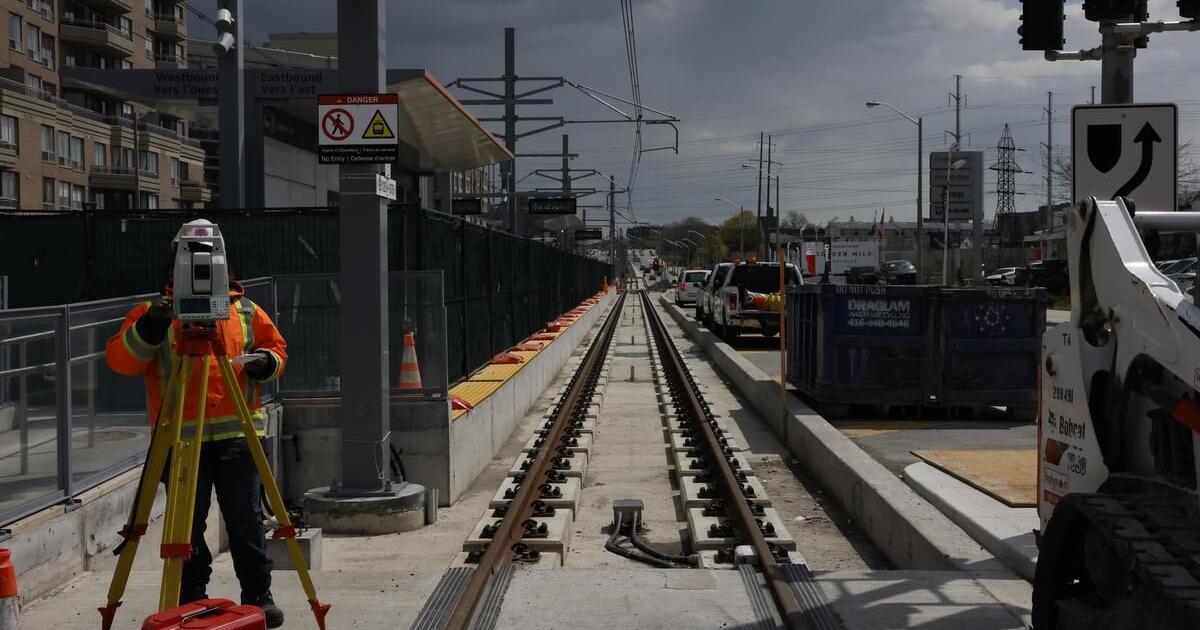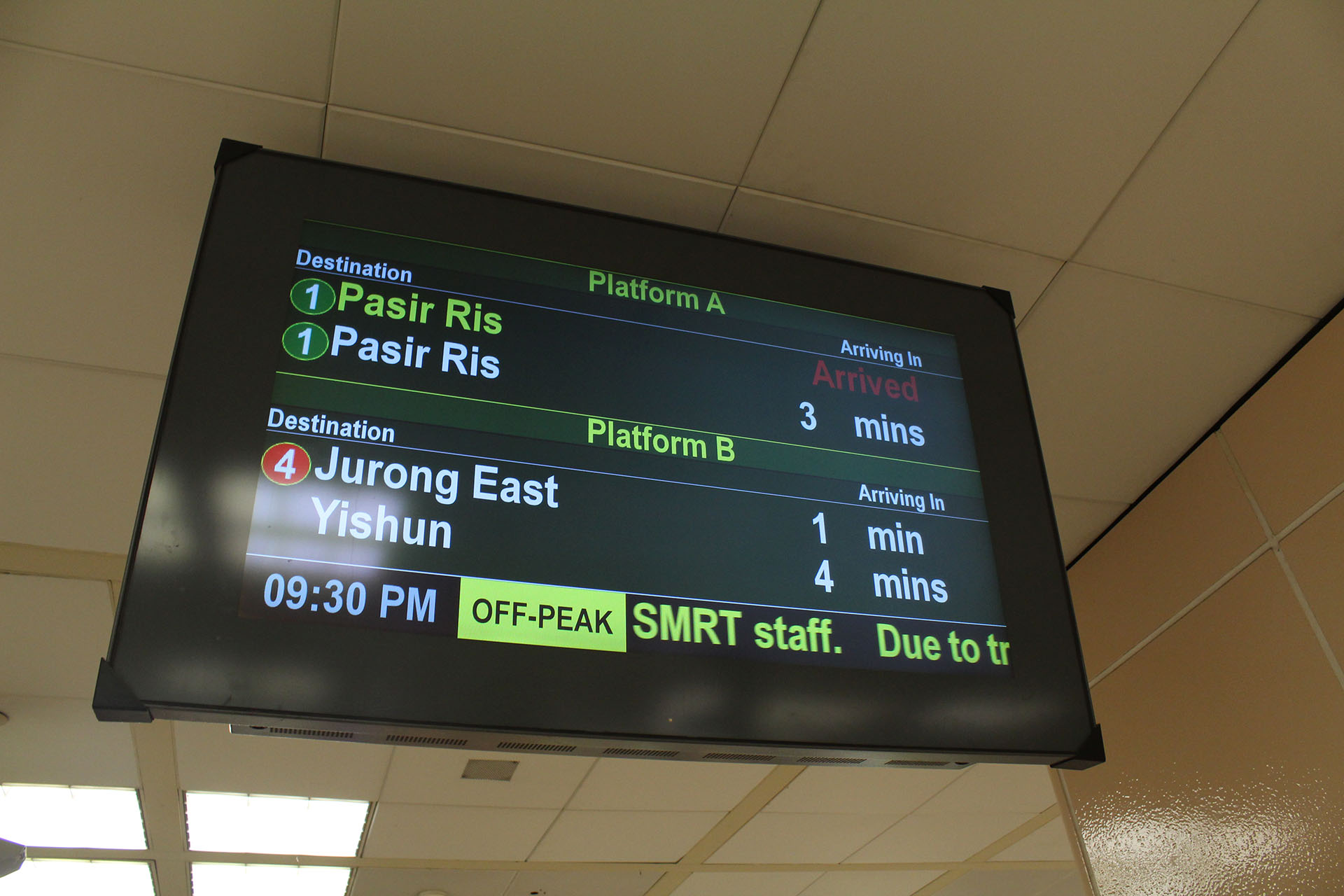T3G
Senior Member
I'm reminded of the pandemic era announcements of future announcements.
Stay tuned to stay tuned.
Stay tuned to stay tuned.
|
|
|
“It’s 98 percent complete but contrary to popular belief it needs to get to 115 percent complete before we can consider opening the line”
Eglinton Crosstown LRT: Opening date to be announced by end of summer
The long-awaited multibillion-dollar transit line is 98 per cent complete, according to Ontario’s associate minister of transportationwww.thestar.com
For what it's worth, by my count there are only three intersections on the surface section without stops right before or after.The issue is not for the intersection that has LRT stops, but rather ones that don't have stops. If there's a Green light, the LRVs need to slowdown to 25km/h while crossing the intersection. This greatly slows down the overall average speed of the surface section.
Nice straw man.How many VIA and GO trains have hit people trespassing on railway crossings? If you forced the trains to slow down to 10 km/h at every level crossing, you would eliminate the risk of this occurring and thus make the trains very safe, but it would also render them completely worthless as a form of transport.
I'm reminded of the pandemic era announcements of future announcements.
Stay tuned to stay tuned.
Guessing there will be "Next Train" display screens at each station and stop.
Eglinton Crosstown LRT: Opening date to be announced by end of summer
The long-awaited multibillion-dollar transit line is 98 per cent complete, according to Ontario’s associate minister of transportationwww.thestar.com

I'm not sure why it would matter that there's no history of rapid transit on Eglinton. Are we asking so much for people to be aware of their surroundings and not blindly dart into traffic? Do brand new European tram lines have speed limits instituted? And people can jaywalk midblock too, so if you want to be really safe, you'd probably want to lower the speed limit to 25 (or slower) along the entire outdoor portion of the line.Nice straw man.
GO and VIA (and CN and CP) operate on tracks that have a long history of existing usage. People have learned to expect that they will be passing by at great speed.
There is no history of rapid transit on Eglinton
Dan
"History of rapid transit on Eglinton" should include the Eglinton West subway.I'm not sure why it would matter that there's no history of rapid transit on Eglinton. Are we asking so much for people to be aware of their surroundings and not blindly dart into traffic? Do brand new European tram lines have speed limits instituted? And people can jaywalk midblock too, so if you want to be really safe, you'd probably want to lower the speed limit to 25 (or slower) along the entire outdoor portion of the line.
After 5, 10 years of the existence of the Crosstown, will the TTC relent and let the cars run faster? Considering that the Spadina line is pushing 30 and it seems to have only gotten slower as it's aged, I shouldn't hedge my bets on it. There doesn't seem to be any danger of speedy operation on St. Clair anytime soon, either. And that's why I made the comparison to the railway - do the "safety considerations" referred in the post I was quoting stop mattering if the line has existed for a long enough time? Or will it be that as the line ages, there will still be inane safety rules, only this time without the TTC being able to hide behind the novelty of the line?
It was first planned for in 1985, as a busway, not a subway. By 1986, the 2011 Network plan was initiated, with the Eglinton West corridor as a subway. In 1994, when Premier Bob Rae agreed to fund the subway project and construction started. The line was cancelled upon the election of Progressive Conservative Mike Harris in 1995.
The TTC's Transit City plan, which was announced in 2007, included a light rail transit line across Eglinton called the Eglinton Crosstown LRT. This line would be built underground between approximately Keele Street and Laird Drive, which would effectively create an Eglinton West "subway", but would use LRT vehicles rather than the subway trains. Mayor Rob Ford announced the cancellation of Transit City on the day he took office in 2010. It was then reinstated along with a Finch LRT line by Toronto City Council, over Mayor Rob Ford's objections.

Eglinton Crosstown LRT: Opening date to be announced by end of summer
The long-awaited multibillion-dollar transit line is 98 per cent complete, according to Ontario’s associate minister of transportationwww.thestar.com
GO and VIA (and CN and CP) operate on tracks that have a long history of existing usage. People have learned to expect that they will be passing by at great speed.
There is no history of rapid transit on Eglinton
Dan
One final email response from Ivan regarding this issue.
View attachment 498748
It's disappointing that not only is there a 50 km/h speed limit on the LRV's in the above ground sections and a lack of true signal priority, but also that the LRV's will be forced to slow down to 25 km/h at intersections. This further gimps the speed on the surface section.
All this because the City of Toronto wants to prioritize single occupancy cars over 150 occupancy LRTs.
Well I presume this Ivan guy doesn't really have someone to send you to, its a completely different organization with its own people and characters. If you want to find who to talk to at the Toronto Transportation Services, you'll have to contact the city directly.I can't seem to stop asking questions to Ivan. Here are the next couple of responses from him.
View attachment 499244
No specific person for me to reach out to. Just general info on Toronto Transportation Services.
View attachment 499245
Basically just PR speak for when the line is scheduled to open and what issues they're facing in the interchange station.




